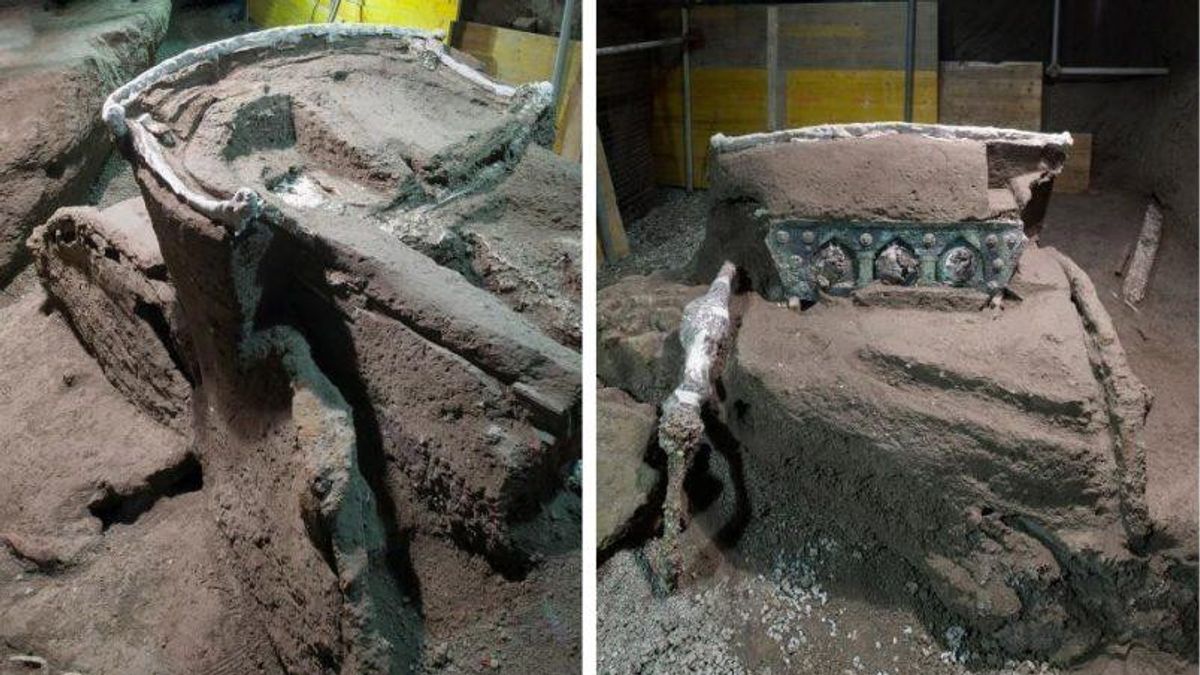
JAKARTA - The Archaeological Site of Pompeii together with the Office of the General Prosecutor's Office of Torre Annunziata, Naples, Italy jointly announced the discovery of a train from ancient Roman times at the end of February.
Launching the pompeiisites.org website, this extraordinary discovery took place at an excavation at a villa in the city of Civita Giuliana, Ancient City of Pompeii. The chariot is almost intact bronze and lead, with wood remains and traces of rope.
"This is a tremendous discovery for the advancement of our knowledge of the ancient world. In Pompeii, vehicles used for transportation have been found in the past, such as that of the House of Menander, or the two chariots found at Villa Arianna, but nothing quite like the train Civita Giuliana, "said Archaeological Site Director Pompeii Massino Osanna, as reported by CNN.
The villa north of Pompeii in Civita Giuliana has a stable where the remains of three horses were found in 2018, including one tied up. The carriage was found on a two-tiered terrace that possibly overlooked a courtyard, not far from the stables.

The Archaeological Site of Pompeii described the find as extraordinary and adds elements to the site's history.
The carriage is decorated with bronze sheets and wooden panels in red and black. On the back, there are various stories engraved on bronze and tin medals.
The ceiling of the villa is deciduous English oak, a material frequently used in Roman times, and has been carefully removed to allow further investigation.
Excavators first discovered parts of the artifact emerging from volcanic material on January 7. A few weeks later, the entire carriage is revealed, miraculously still intact even though part of the room that houses it collapse.

The Pompeii Archaeological Site move the artifact to its laboratory to remove any remaining volcanic material. Furthermore, there will be a lengthy restoration and reconstruction process.
"Pompei continues to amaze with all of his discoveries, and it will continue to happen for many years to come, with twenty hectares still to be dug", said Italian Culture Minister Dario Franceschini.
"But most importantly, it shows that valorization can occur, and attract tourists from all over the world, while at the same time research, education and studies are being carried out," he added.
The Archaeological Site of Pompeii believes chariots have ceremonial uses, such as accompanying celebrations, parades, and processions. This type of train had never been found in Italy before, instead resembling those from Thrace, in northern Greece.
To note, the Ancient City of Pompeii is one of Italy's top tourist attractions and a UNESCO World Heritage site. Most of the ancient Greek and Roman cities are still covered in the rubble when Mount Vesuvius erupted and blanketed the city with ash and pumice nearly 2,000 years ago.
The English, Chinese, Japanese, Arabic, and French versions are automatically generated by the AI. So there may still be inaccuracies in translating, please always see Indonesian as our main language. (system supported by DigitalSiber.id)







